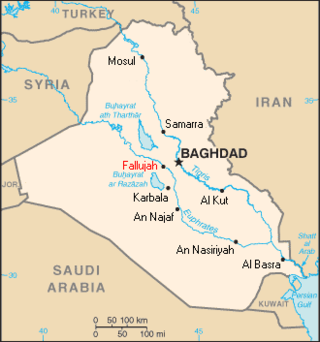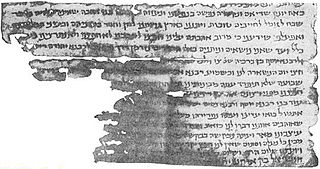Related Research Articles

Rabbinic literature, in its broadest sense, is the entire spectrum of rabbinic writings throughout Jewish history. However, the term often refers specifically to literature from the Talmudic era, as opposed to medieval and modern rabbinic writings, and thus corresponds with the Hebrew term Sifrut Chazal. This more specific sense of "Rabbinic literature"—referring to the Talmudim, Midrashim, and related writings, but hardly ever to later texts—is how the term is generally intended when used in contemporary academic writing. The terms mefareshim and parshanim (commentaries/commentators) almost always refer to later, post-Talmudic writers of rabbinic glosses on Biblical and Talmudic texts.

Jewish philosophy includes all philosophy carried out by Jews, or in relation to the religion of Judaism. Until modern Haskalah and Jewish emancipation, Jewish philosophy was preoccupied with attempts to reconcile coherent new ideas into the tradition of Rabbinic Judaism, thus organizing emergent ideas that are not necessarily Jewish into a uniquely Jewish scholastic framework and world-view. With their acceptance into modern society, Jews with secular educations embraced or developed entirely new philosophies to meet the demands of the world in which they now found themselves.

Saʿadia ben Yosef Gaon was a prominent rabbi, gaon, Jewish philosopher, and exegete who was active in the Abbasid Caliphate.

Hai ben Sherira better known as Hai Gaon, was a medieval Jewish theologian, rabbi and scholar who served as Gaon of the Talmudic academy of Pumbedita during the early 11th century. He was born in 939 and died on March 28, 1038. He received his Talmudic education from his father, Sherira ben Hanina, and in early life acted as his assistant in teaching. In his forty-fourth year he became associated with his father as "av bet din," and with him delivered many joint decisions. According to Sefer HaKabbalah of Rabbi Abraham ben David (Ravad), he was the last of the Geonim.

Isaac Israeli ben Solomon, also known as Isaac Israeli the Elder and Isaac Judaeus, was one of the foremost Jewish physicians and philosophers living in the Arab world of his time. He is regarded as the father of medieval Jewish Neoplatonism. His works, all written in Arabic and subsequently translated into Hebrew, Latin and Spanish, entered the medical curriculum of the early thirteenth-century universities in Medieval Europe and remained popular throughout the Middle Ages.

Isaac ben Jacob Alfasi (1013–1103) - also known as the Alfasi or by his Hebrew acronym, the Rif, was a Maghrebi Talmudist and posek. He is best known for his work of halakha, the legal code Sefer Ha-halachot, considered the first fundamental work in halakhic literature. His name "Alfasi" means "of Fez" in Arabic, but opinions differ as to whether he ever lived in Fez.
Chananel ben Chushiel or Ḥananel ben Ḥushiel, an 11th-century Kairouanan rabbi and Talmudist, was in close contact with the last Geonim. He is best known for his commentary on the Talmud. Chananel is often referred to as Rabbeinu Chananel – Hebrew for "our teacher, Chananel".
Nissim ben Jacob, also known as Nissim Gaon, was a rabbi and Gaon best known today for his Talmudic commentary ha-Mafteach, by which title he is also known.
Dunash ibn Tamim was a Jewish tenth century scholar, and a pioneer of scientific study among Arabic-speaking Jews. His Arabic name was أبو سهل Abu Sahl; his surname, according to an isolated statement of Moses ibn Ezra, was "Al-Shafalgi," perhaps after his (unknown) birthplace. Another name referring to him is Adonim.
Jeshua ben Judah was a Karaite scholar, exegete and philosopher, who lived in eleventh-century Iraq or at Jerusalem.
Levi ben Japheth, born Abu Said al-Lawi ibn Hasan al-Basri was a prominent Jewish Karaite scholar who flourished in the first half of the 11th-century CE probably at Jerusalem or Ramleh. He is the author of Kitab an-Ni'ma, which is the earliest known Karaite compendium of Mu'tazilite thought.
Isaac ben Judah ibn Ghiyyat (1030/1038–1089) was a Spanish rabbi, Biblical commentator, codifier of Jewish law, philosopher, and liturgical poet. He was born and lived in the town of Lucena, where he also headed a rabbinic academy. He died in Cordoba.

Chushiel ben Elchanan was president of the bet ha-midrash at Kairouan, Tunisia toward the end of the 10th century. He was most probably born in Italy, but his origins and travels remain obscure, and his eventual arrival in Kairwan is the subject of a well-known story.
Shem Tov ben Abraham ibn Gaon was a Spanish Talmudist and kabbalist.
Samuel ben Hofni. He was the gaon of Sura Academy in Mesopotamia ("Babylonia") from 998 to 1012.
Samuel ben Jacob ibn Jam or Samuel ben Jacob Jam'a was rabbi of the North-African community of קאבס (Gabès?) who flourished in the 12th century. He was on intimate terms with Abraham ibn Ezra, who dedicated to him his Ḥai ben Meḳiẓ and mentioned eulogiously three of his sons — Judah, Moses, and Jacob.
Moses ibn Tibbon was a Jewish physician, author and translator in Provence. The number of works written by Moses ibn Tibbon suggest that he reached a great age.
Shem-Tob ben Isaac Shaprut of Tudela was a Spanish Jewish philosopher, physician, and polemicist. He is often confused with the physician Shem-Tob ben Isaac of Tortosa, who lived earlier. He may also be confused with another Ibn Shaprut, Hasdai Ibn Shaprut, who corresponded with the king of the Khazars in the 900's.
Nahum Ma'arabi was a Moroccan Hebrew poet and translator of the thirteenth century.
The Tunisian city of Kairouan, also known as Kirwan or al-Qayrawan was a world center of Talmudic and Halakhic scholarship for at least three generations.
References
- ↑ Munich MSS., No. 92, 20; De Rossi MSS., No. 769
![]() This article incorporates text from a publication now in the public domain : Kaufmann Kohler and Isaac Broydé (1901–1906). "Jacob ben Nissim ibn Shahin". In Singer, Isidore; et al. (eds.). The Jewish Encyclopedia . New York: Funk & Wagnalls. It has the following bibliography:
This article incorporates text from a publication now in the public domain : Kaufmann Kohler and Isaac Broydé (1901–1906). "Jacob ben Nissim ibn Shahin". In Singer, Isidore; et al. (eds.). The Jewish Encyclopedia . New York: Funk & Wagnalls. It has the following bibliography:
- M. H. Landauer, in Orient, vii. 121;
- Julius Fürst, ib. vi. 562;
- Dukes, Ḳonṭres ha-Masoret;
- Salomon Munk, Notice sur Aboulwalid, p. 47;
- Moritz Steinschneider, Cat. Bodl. col. 1243;
- idem, Hebr. Uebers. p. 396;
- idem, Die Arabische Literatur der Juden, § 58.K